Apr 04, 2024, Updated Apr 19, 2024 When I was little, I used to call kuttu ki puri “kali puri” as in black puri (kali in Hindi means black). My dad always kept all 9 days of Navratri fast ever since I can remember. And we were not allowed to keep fast as kids so, during Navratri, when mom made kuttu ki puri for dad, it felt like a special meal. She would make regular puris for us (the ones made with atta) but I would beg her to give me “kali puris”. Honestly, I looked forward to all the fasting food so much, from lauki kheer to sabudana kheer, sabudana khichdi , these puris and vrat wale aloo. Dad would always share with me fasting food during Navratri. I miss those wonderful childhood days! My mom would always add boiled and mashed potatoes to her kuttu puris to bind the dough (since buckwheat flour is gluten free). However, I follow the same principle as I do for ragi roti and these come out perfect without any binding agent. Hot water gelatinises the flour (starch granules swell causing the dough to become more firm and easy to work with) and so you can roll these easily without any added potatoes! I feel these are lighter compared to my mom’s since I don’t use potatoes to bind them.
How to Make Kuttu ki Puri
Serving Suggestions
If making these for fasts like Navratri, Ekadashi you can serve these with vrat wale aloo, dahi aloo, dahi arbi, and lauki sabzi.
Kuttu ki puri is more crisp compared to regular puri. It is best eaten immediately. Unlike regular puris, kuttu puris become hard as they cool down. They have a nutty/earthy taste. If you have had buckwheat flour in any form (like pancakes, waffles), then you know the taste! The puris are naturally gluten free.
Let this water come to a boil. As soon as it starts boiling, add 2 cups (260 grams) kuttu ka atta (buckwheat flour) to the pan. Turn off the gas. After 3-4 minutes, the flour would be easier to touch as it would have cooled down a little. Transfer everything to a large plate or paraat. Start bringing the dough together using your hands. At this point add the remaining 1/2 teaspoon oil and more hot water as needed. I added 2 tablespoons more warm water at this point. Mix until you have a smooth dough. There’s no need to knead this dough, just bring it together. Cover the dough and let it rest for 5 minutes. Roll the puri to a circle of around 5-inches in diameter. You can use some dry buckwheat flour while rolling it if the rolling pin is sticking to the dough. The thickness of these kuttu puris will be slightly more than regular wheat puris. Because we boiled the water and scalded the flour, you will be able to roll the puris very easily using your regular chakla and belan. I actually roll all the puris first and keep them stacked before frying. These don’t even stick to each other so you can easily stack them. You will not need any parchment paper. If you are having trouble though, roll between 2 sheets of parchment paper. Now gently drop one of the rolled puris into the hot oil. Immediately press it with a slotted spoon so that it puffs up. Once this side is puffed, flip and cook the other side as well. Then drain the puri on a paper towel to remove excess oil. Fry all the puris similarly. Serve kuttu ki puri with dahi aloo or vrat wale aloo! If making them without fasting, enjoy them with chole and aloo rasedaar.
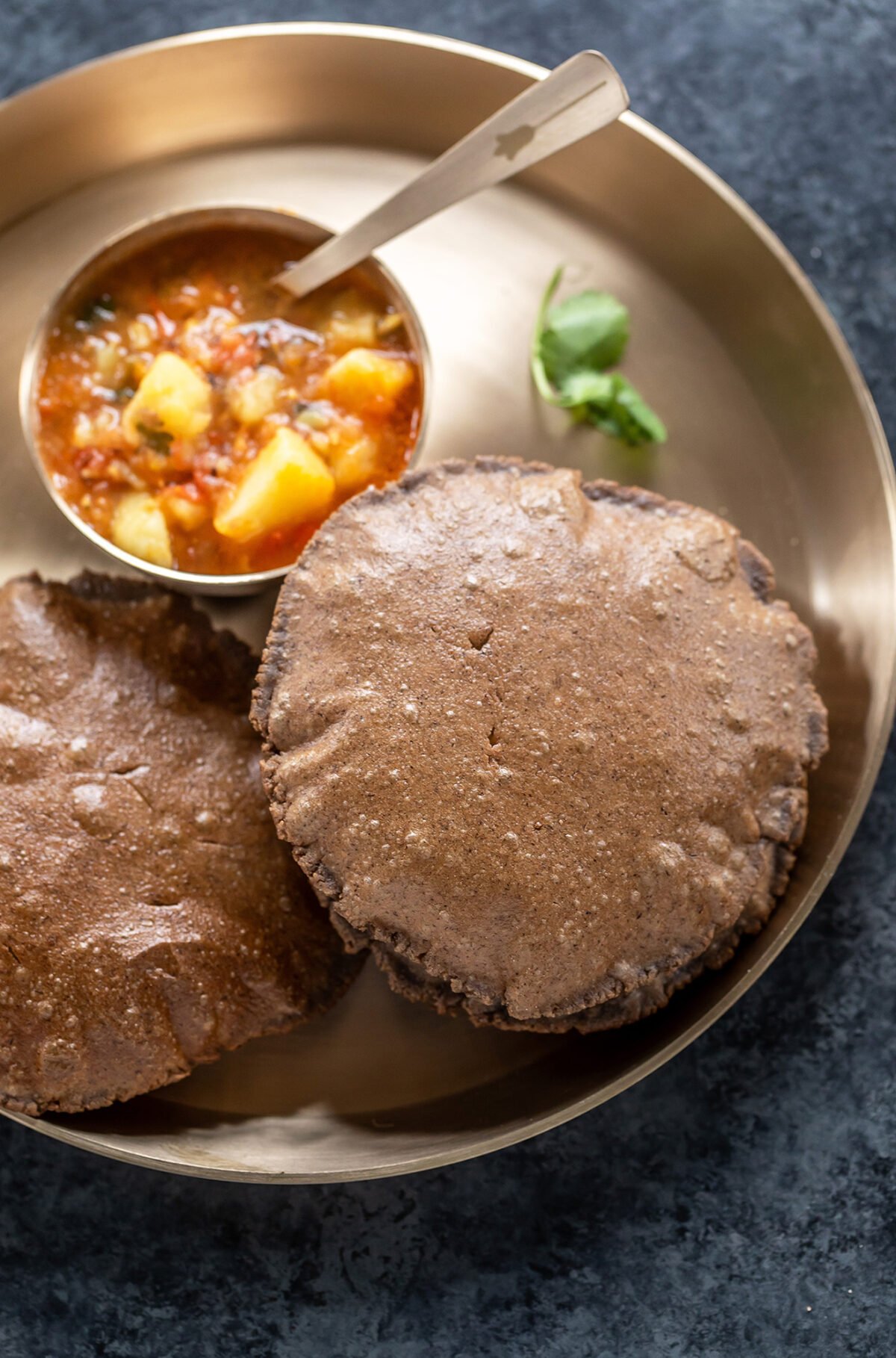

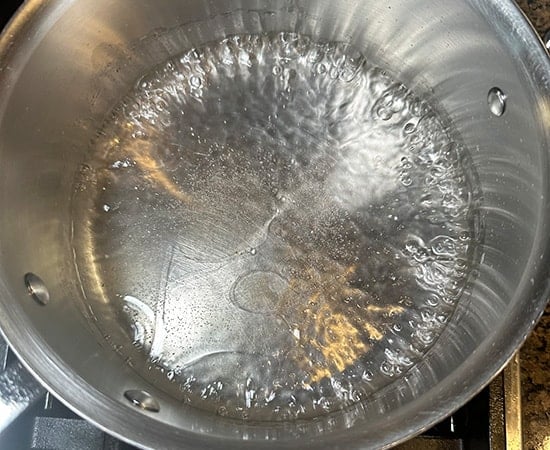
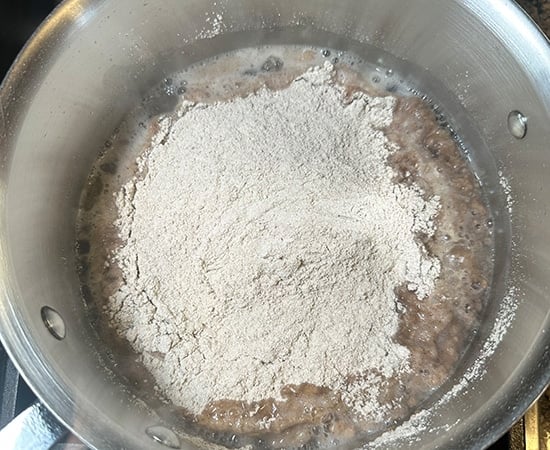
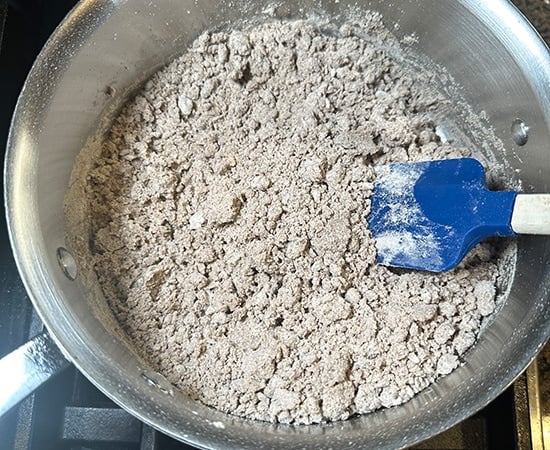
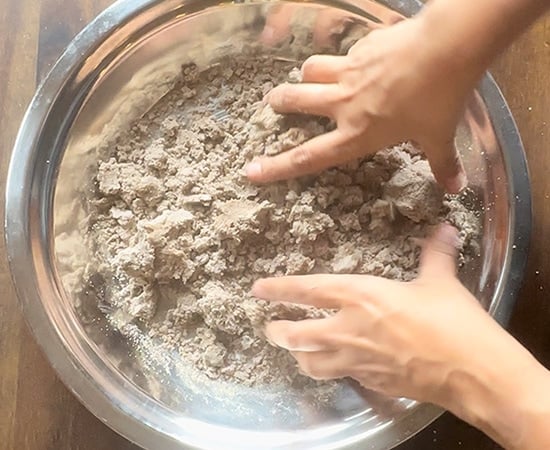
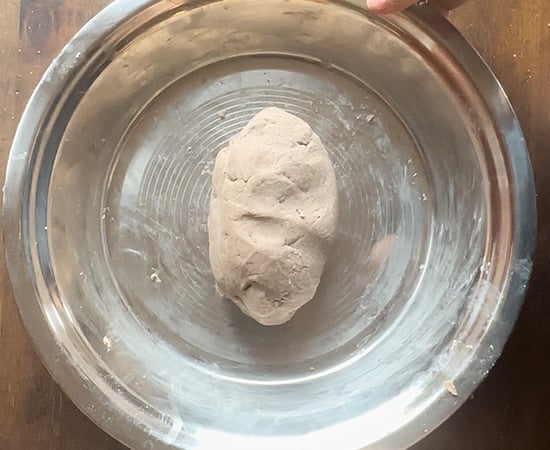
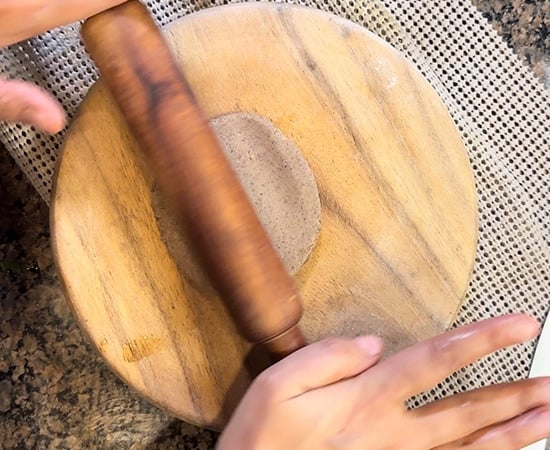
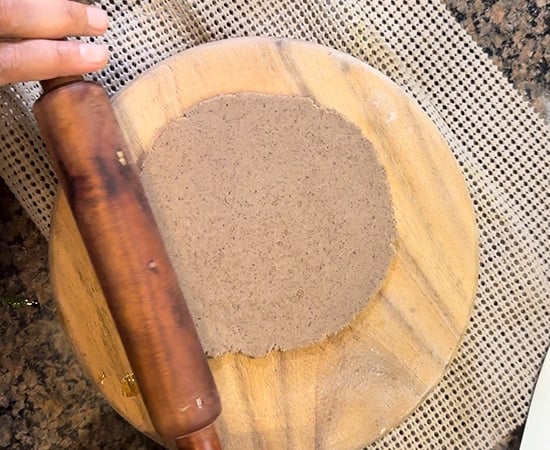
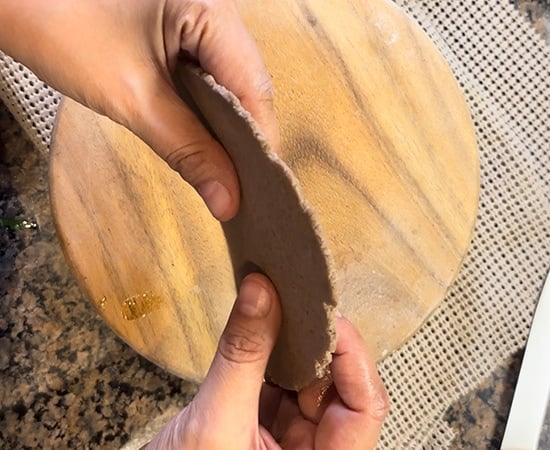
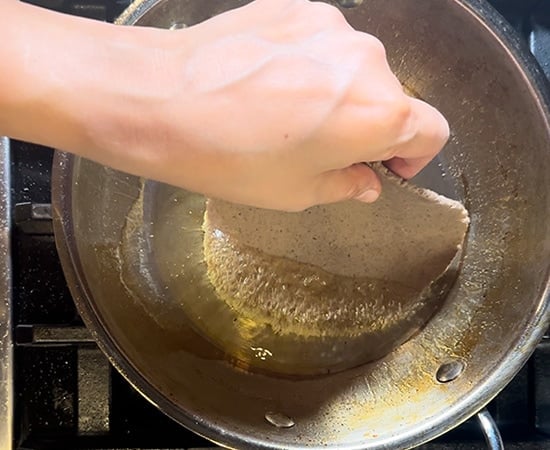
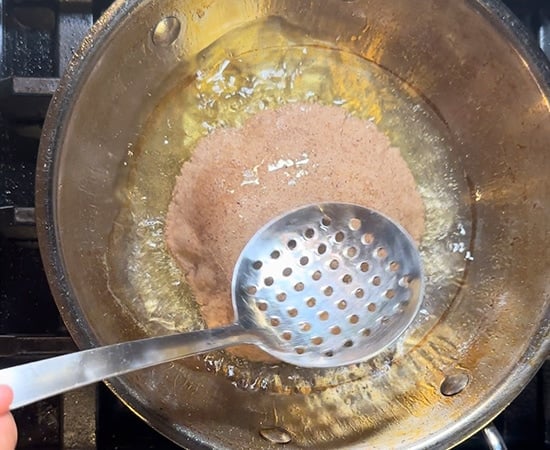
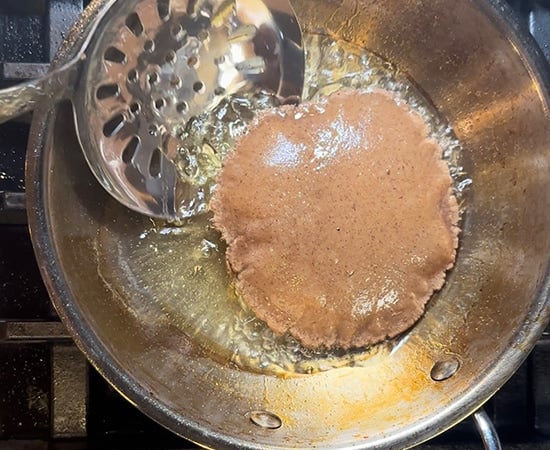
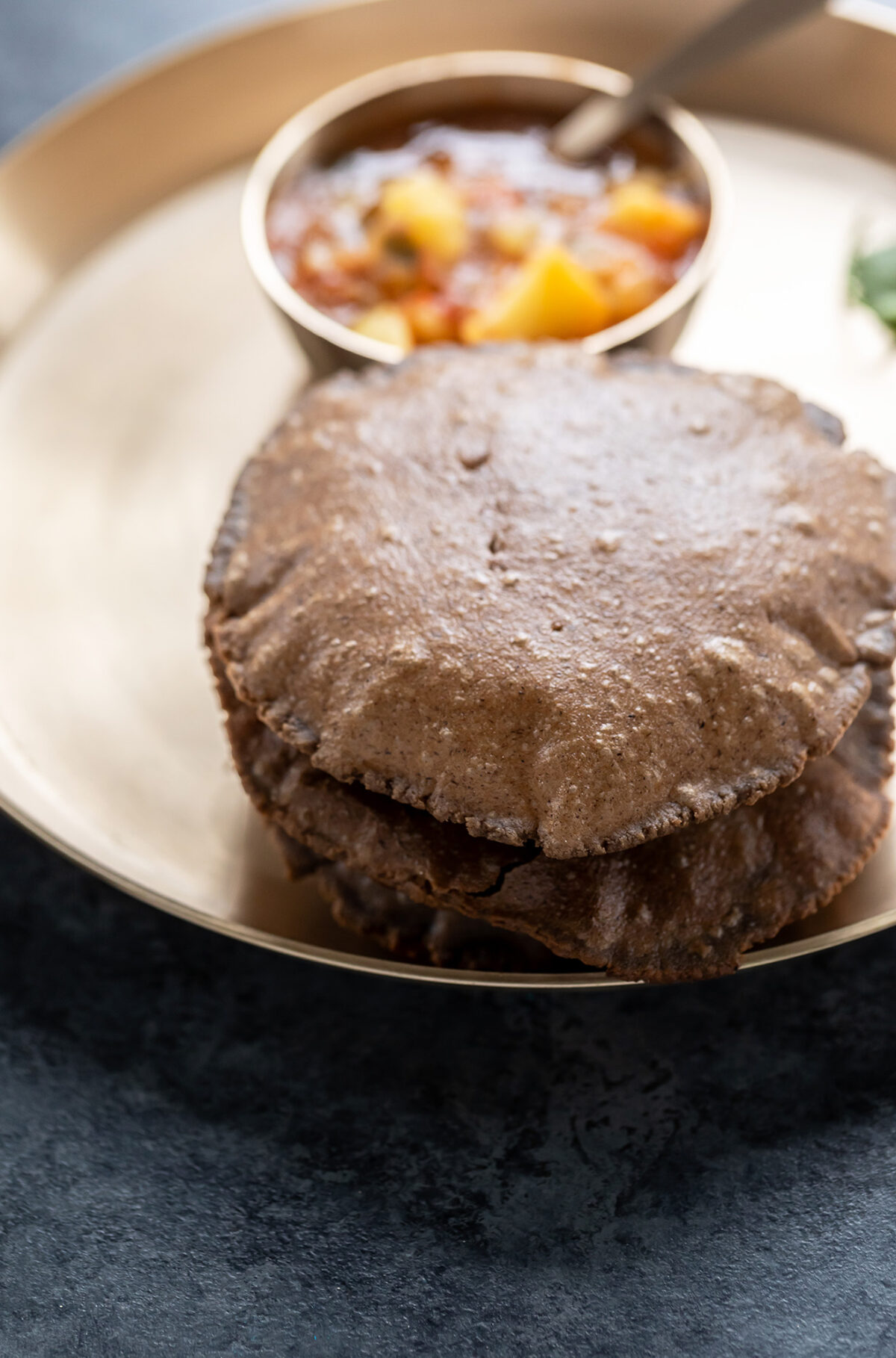
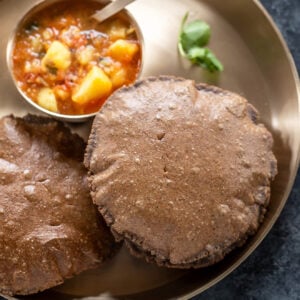
title: “Kuttu Ki Puri Without Potatoes " ShowToc: true date: “2024-10-31” author: “Michael Munoz”
Apr 04, 2024, Updated Apr 19, 2024 When I was little, I used to call kuttu ki puri “kali puri” as in black puri (kali in Hindi means black). My dad always kept all 9 days of Navratri fast ever since I can remember. And we were not allowed to keep fast as kids so, during Navratri, when mom made kuttu ki puri for dad, it felt like a special meal. She would make regular puris for us (the ones made with atta) but I would beg her to give me “kali puris”. Honestly, I looked forward to all the fasting food so much, from lauki kheer to sabudana kheer, sabudana khichdi , these puris and vrat wale aloo. Dad would always share with me fasting food during Navratri. I miss those wonderful childhood days! My mom would always add boiled and mashed potatoes to her kuttu puris to bind the dough (since buckwheat flour is gluten free). However, I follow the same principle as I do for ragi roti and these come out perfect without any binding agent. Hot water gelatinises the flour (starch granules swell causing the dough to become more firm and easy to work with) and so you can roll these easily without any added potatoes! I feel these are lighter compared to my mom’s since I don’t use potatoes to bind them.
How to Make Kuttu ki Puri
Serving Suggestions
If making these for fasts like Navratri, Ekadashi you can serve these with vrat wale aloo, dahi aloo, dahi arbi, and lauki sabzi.
Kuttu ki puri is more crisp compared to regular puri. It is best eaten immediately. Unlike regular puris, kuttu puris become hard as they cool down. They have a nutty/earthy taste. If you have had buckwheat flour in any form (like pancakes, waffles), then you know the taste! The puris are naturally gluten free.
Let this water come to a boil. As soon as it starts boiling, add 2 cups (260 grams) kuttu ka atta (buckwheat flour) to the pan. Turn off the gas. After 3-4 minutes, the flour would be easier to touch as it would have cooled down a little. Transfer everything to a large plate or paraat. Start bringing the dough together using your hands. At this point add the remaining 1/2 teaspoon oil and more hot water as needed. I added 2 tablespoons more warm water at this point. Mix until you have a smooth dough. There’s no need to knead this dough, just bring it together. Cover the dough and let it rest for 5 minutes. Roll the puri to a circle of around 5-inches in diameter. You can use some dry buckwheat flour while rolling it if the rolling pin is sticking to the dough. The thickness of these kuttu puris will be slightly more than regular wheat puris. Because we boiled the water and scalded the flour, you will be able to roll the puris very easily using your regular chakla and belan. I actually roll all the puris first and keep them stacked before frying. These don’t even stick to each other so you can easily stack them. You will not need any parchment paper. If you are having trouble though, roll between 2 sheets of parchment paper. Now gently drop one of the rolled puris into the hot oil. Immediately press it with a slotted spoon so that it puffs up. Once this side is puffed, flip and cook the other side as well. Then drain the puri on a paper towel to remove excess oil. Fry all the puris similarly. Serve kuttu ki puri with dahi aloo or vrat wale aloo! If making them without fasting, enjoy them with chole and aloo rasedaar.














